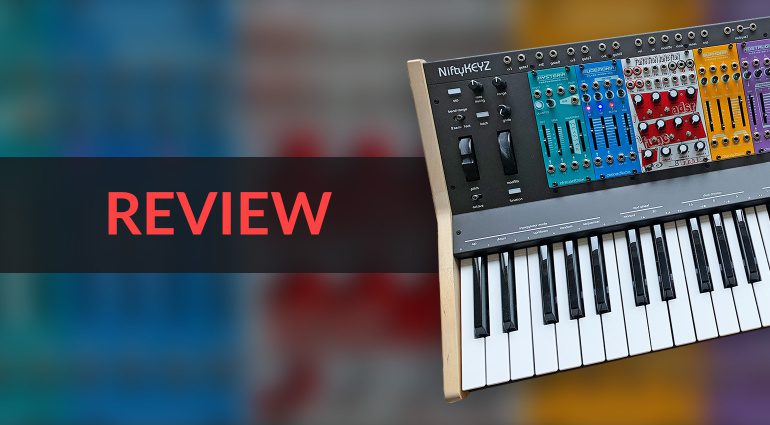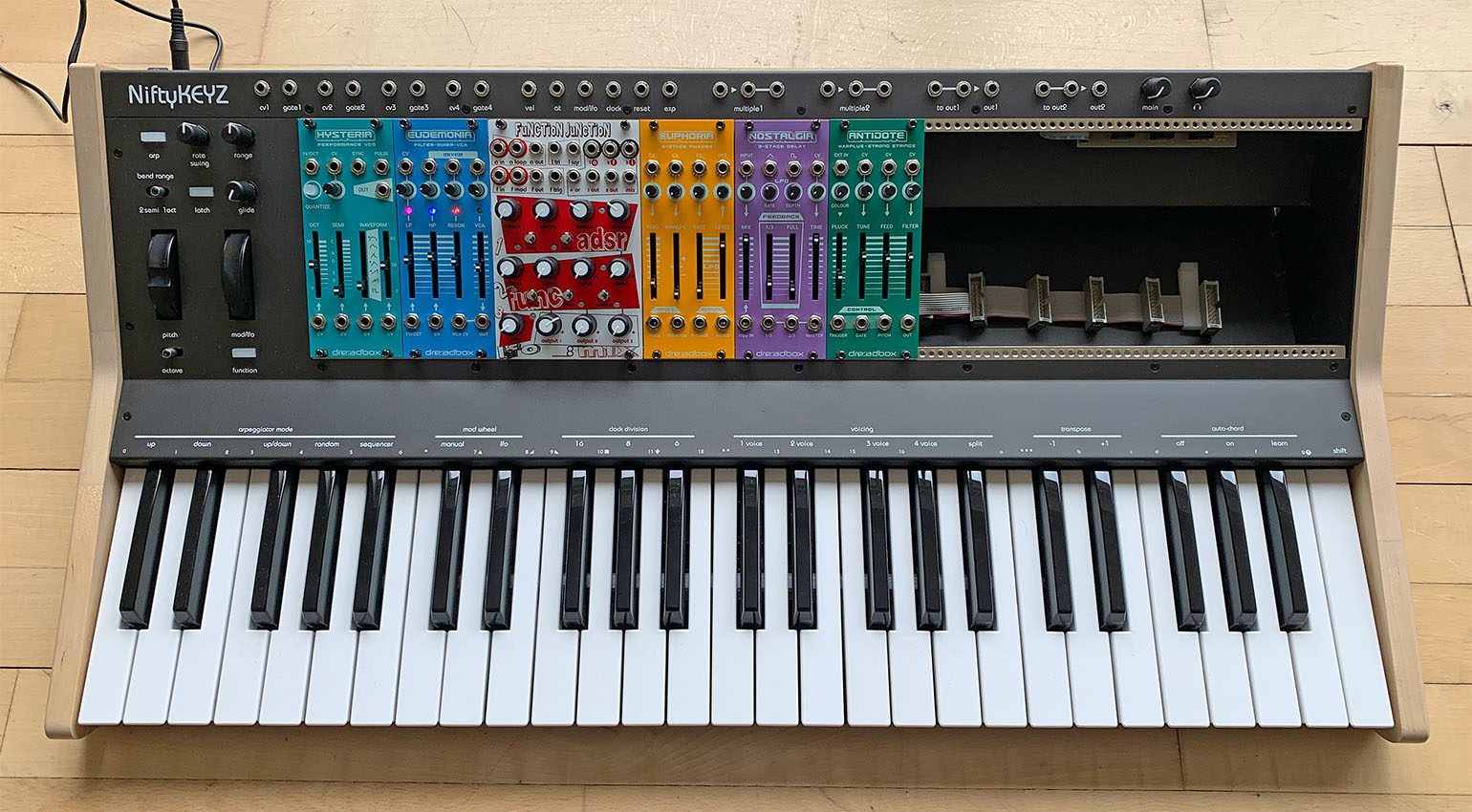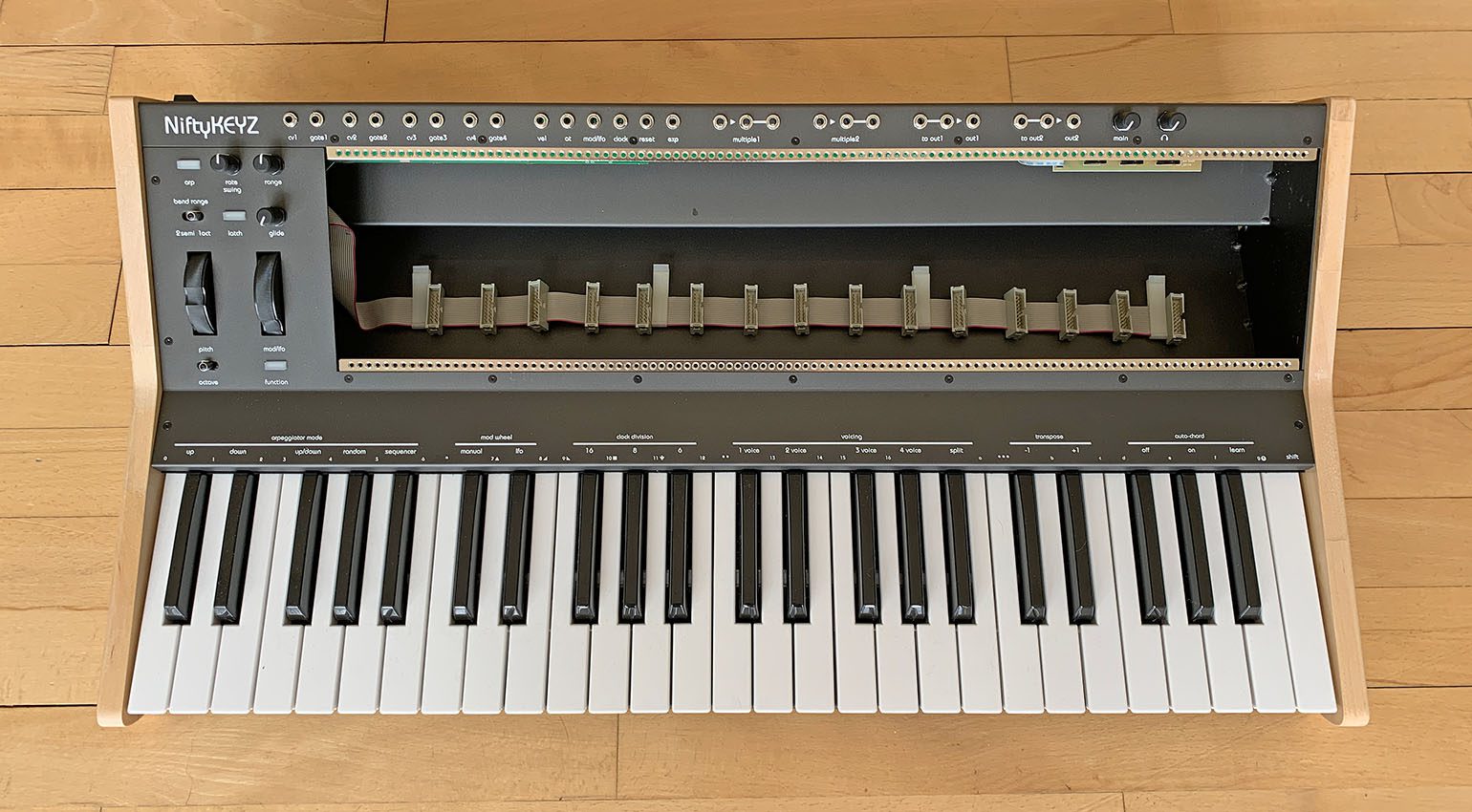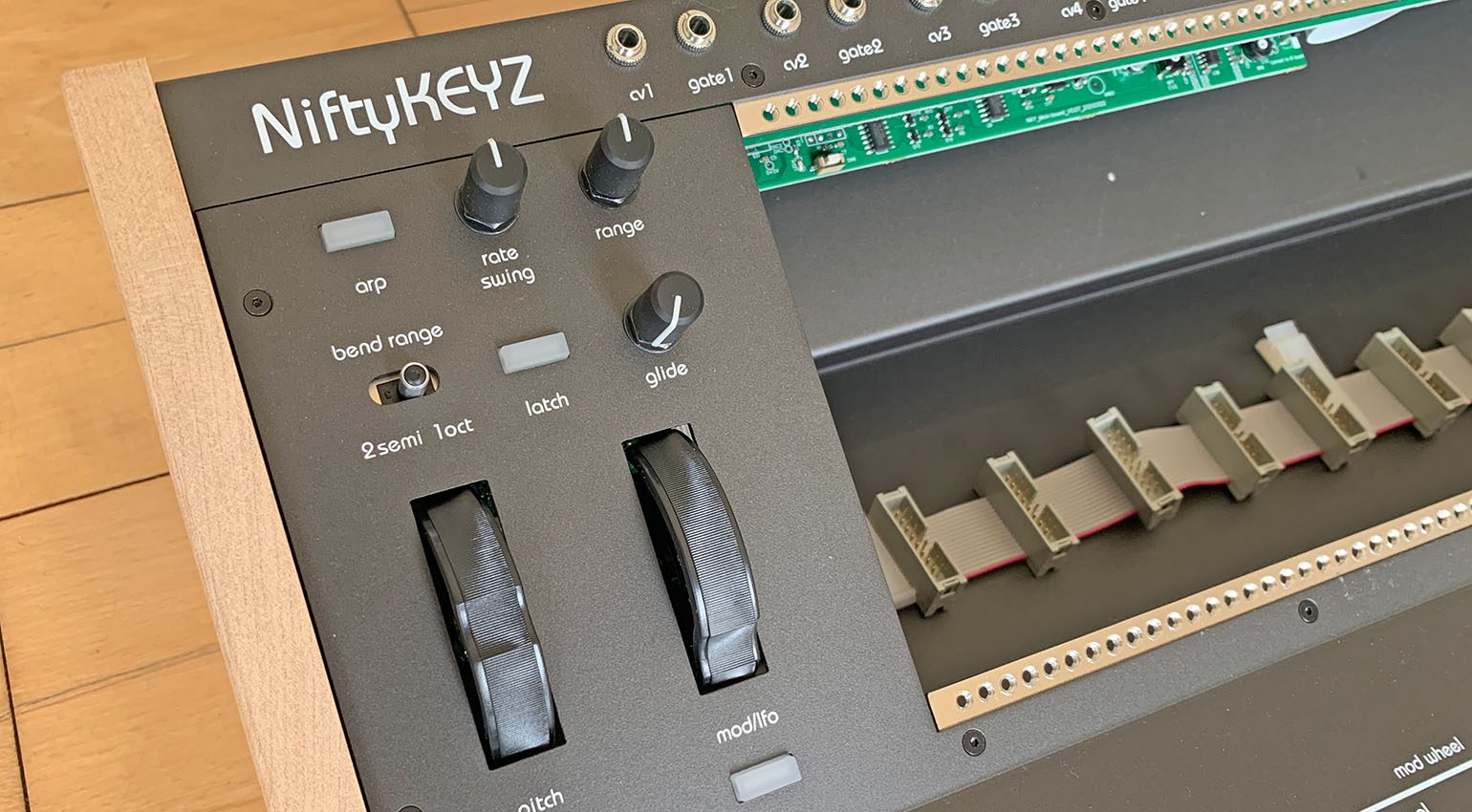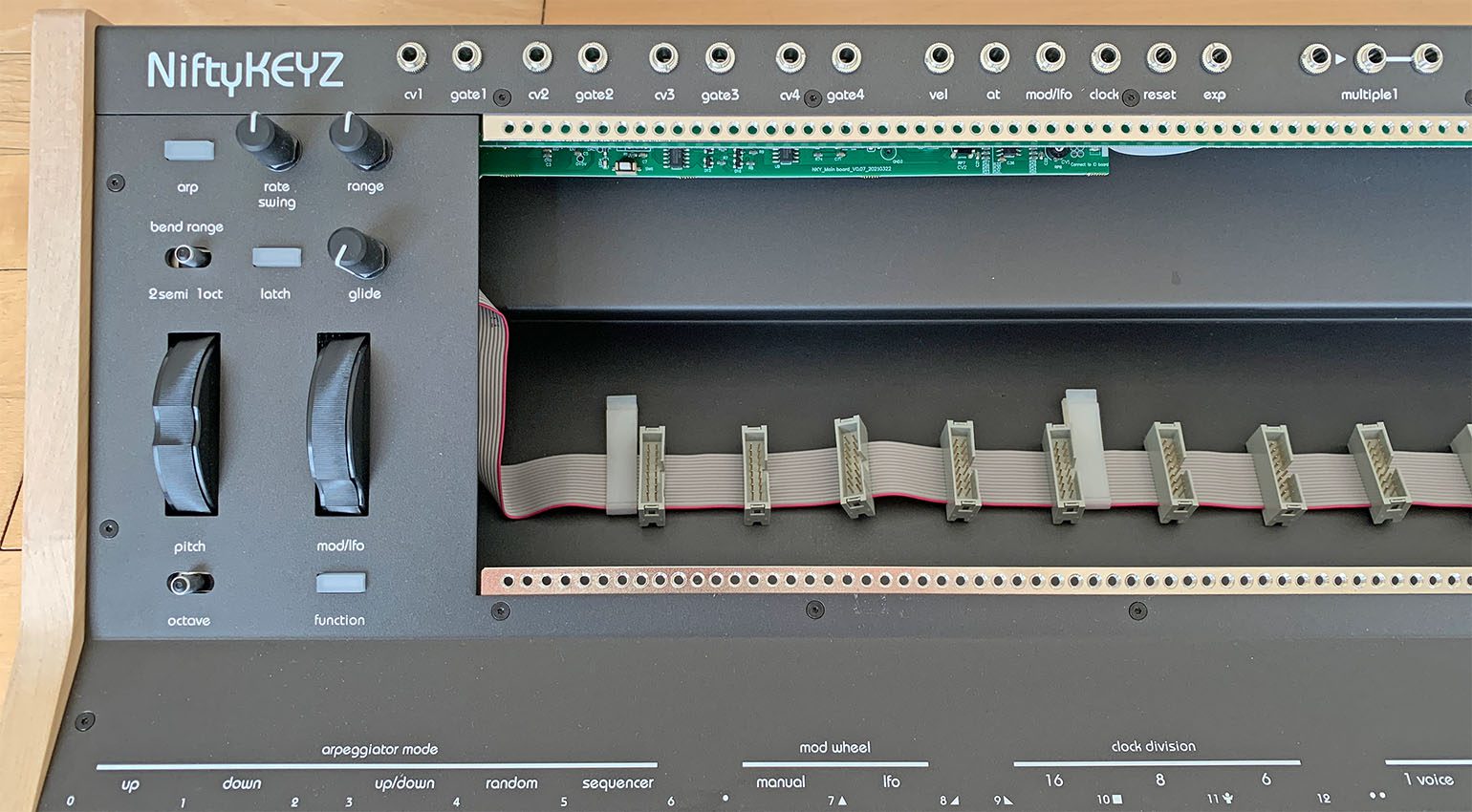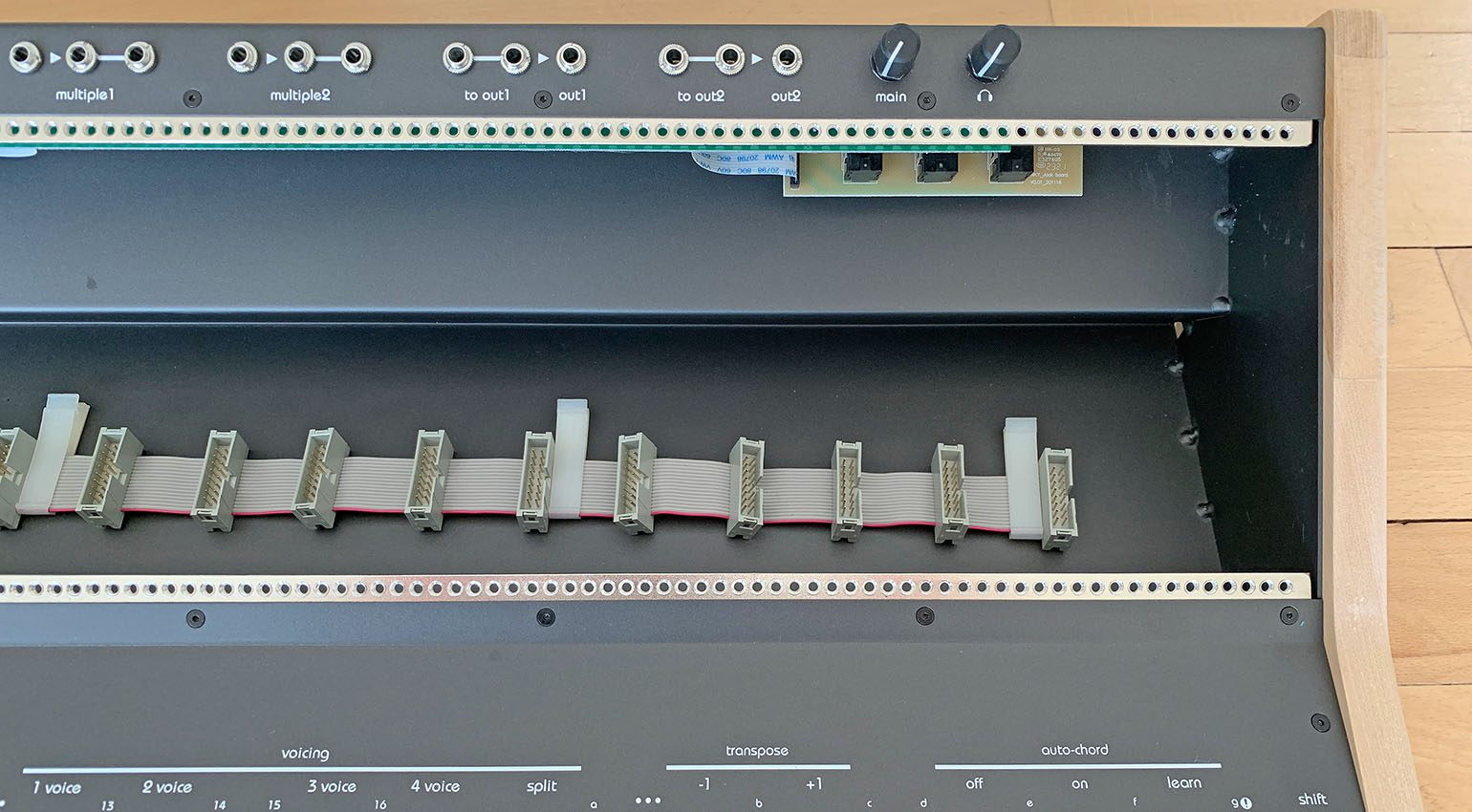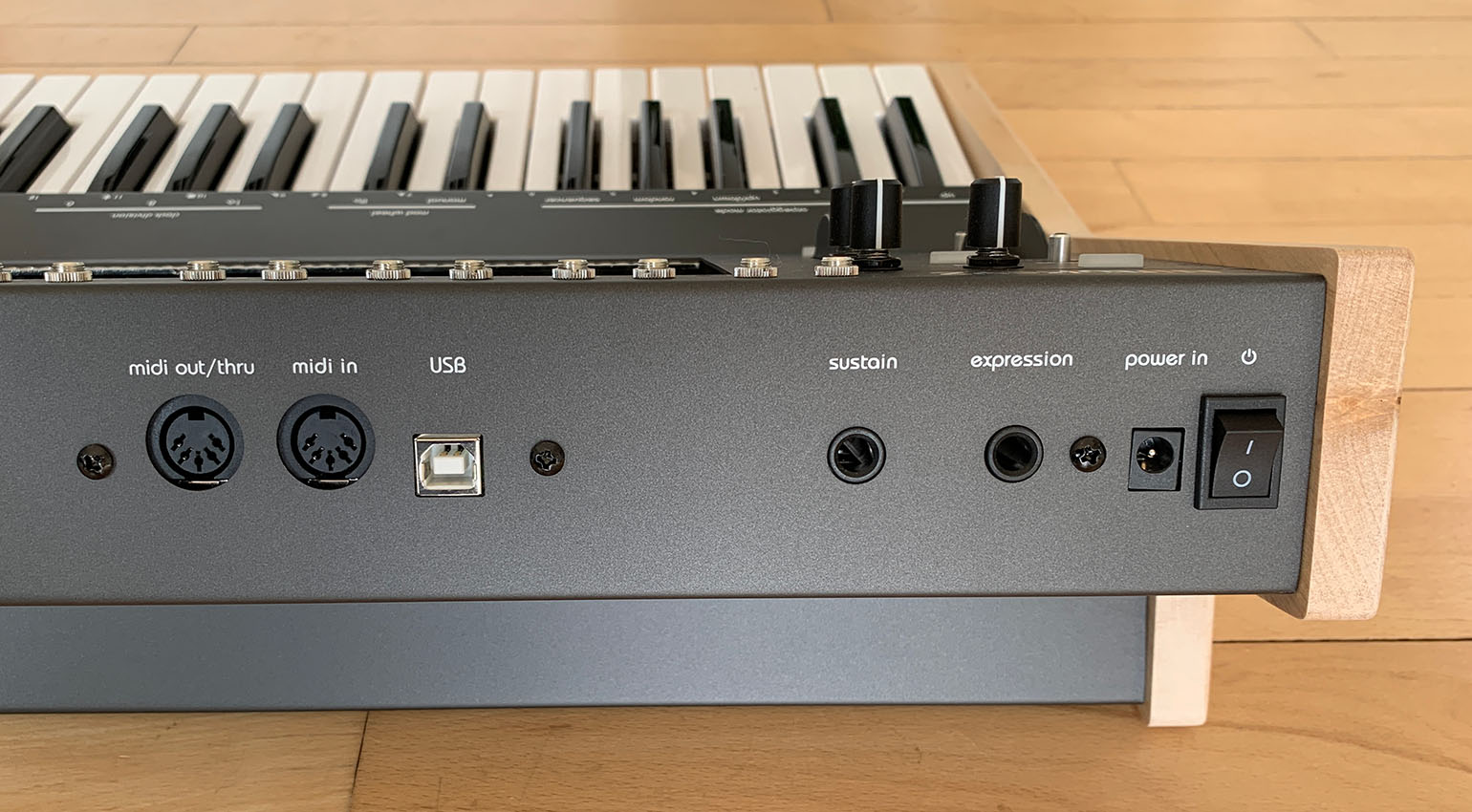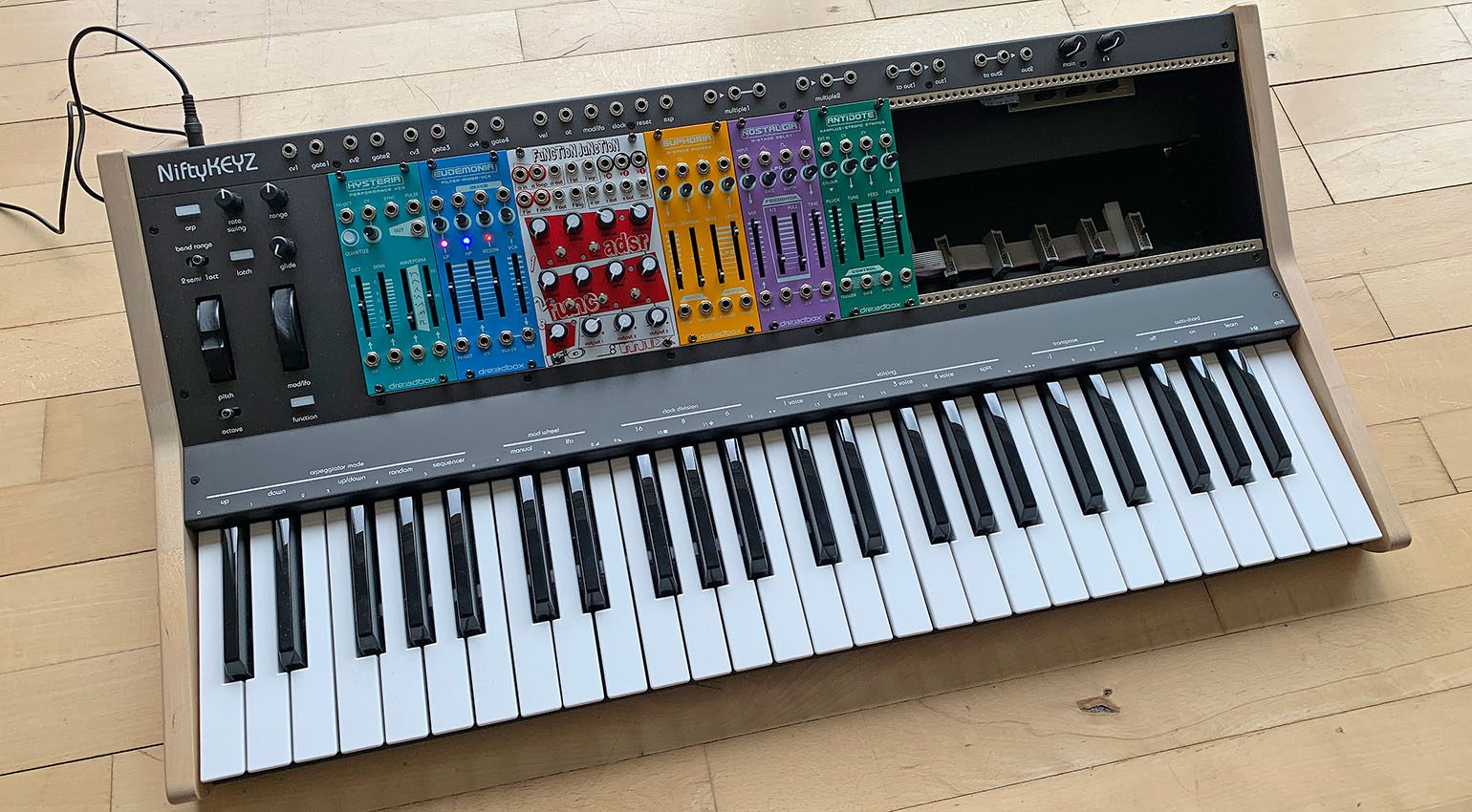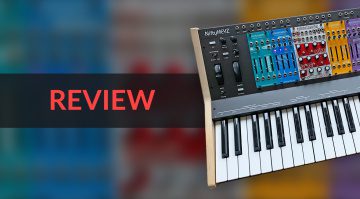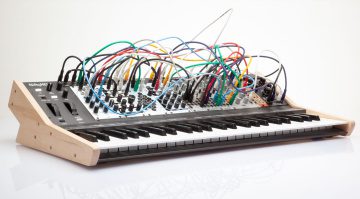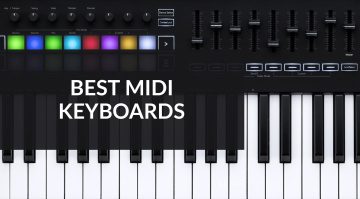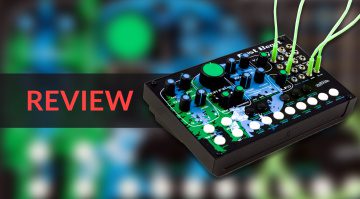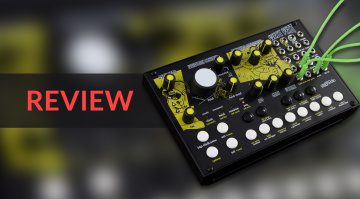Cre8audio NiftyKEYZ review: The Ultimate Eurorack Keyboard Controller?
Cre8audio is stepping in Waldorf’s footsteps with NiftyKEYZ, a sleek keyboard controller for your Eurorack modules. While the concept is similar to the kb37, NiftyKEYZ has got a couple of nifty tricks up its sleeve – four voices of polyphony being the most obvious one. We’ve had the opportunity to fire up a NiftyKEYZ ahead of the official announcement for a test run and review.
Cre8audio NiftyKEYZ Eurorack keyboard controller
If you’ve missed the opportunity to pick up the Waldorf kb37 before it was discontinued, lighten up! You no longer have to haul a separate KeyStep Pro along with your Eurorack system. With the new NiftyKEYZ, Cre8audio presents an alternative that takes many clues from Waldorf’s version, but adds a bunch of good ideas and useful features.
At first glance, the similarities are obvious. Like the kb37, NiftyKEYZ is a keyboard controller with space for a bunch of Eurorack modules built into it. The controller powers the modules and provides not only a keyboard, but also a USB/MIDI to CV interface, outputs, and even an arpeggiator. In a nutshell, it’s a blank canvas that allows you to put together your own custom Eurorack synthesizer.
That said, there are some important differences. Firstly, NiftyKEYS offers 49 full size keys, which is a whole octave more than the Waldorf. It also has more space for modules (112 HP compared to 107 HP). And it lets you control up to four voices independently – the kb37 can handle a maximum of two. In short, while the concept is similar, NiftyKEYZ has got the edge over the kb37 in terms of numbers.
Hardware
Freed from the shipping box, the Cre8audio NiftyKEYZ feels reassuringly solid. The metal chassis with wooden sides feels really nice, as do the knobs and buttons. The synth-action keyboard is pretty decent and offers velocity and aftertouch, both of which can be assigned to any modulation destination in your patch via patch cables.
The integrated Eurorack case is equipped with 15 power connectors for modules. The power supply delivers up to 1500 mA at +12 V, 1000 mA at -12 V and 1000 mA at +5 V. From the rails to the top of the power connectors, the depth is about 65 mm. Figuring in the connectors, the usable depth for modules will be a bit less than that.
The CV and gate outputs and all other minijack patch connectors like velocity, aftertouch, mod wheel and clock are located above the module space, which is convenient for patching. While I prefer this setup to the kb37, which has all its patch points on the left side, patch cables still tend to dangle over the keys and get in your way while playing. So it’s best to use cables that are just barely long enough, or make a habit of letting your cables hang over the back of the instrument.
To the left of the Eurorack space are the pitch and modulation wheels. This is also where you’ll find an octave switch, another switch for setting the pitch bend range (2 semitones or 1 octave), and the controls for the arpeggiator and glide. The latch button not only lets you take your hands off the keys while using the arpeggiator. You can also use it to keep the gates open when you’re not using the arpeggiator, which is great for drones or if you don’t want to keep your foot on the sustain pedal.
Four CV/gate output pairs and versatile voice modes
One glance at the NiftyKEYZ’ CV outputs reveals its biggest advantage over the kb37. There are four CV/gate output pairs, which means that you can address up to four independent voices – provided you have the necessary Eurorack modules. The controller offers a choice of several voice modes. You can even split the keyboard into two independent zones, each with their own CV/gate outputs. There are voice modes for two monophonic or two duophonic parts, or a combination of one monophonic and one duophonic part. And the auto chord mode lets you trigger chords with up to four voices with a single key. That’s plenty of versatility for controlling complex, multi-layered patches.
Next to the CV/gate outputs, you’ll find the CV outputs for the keyboard velocity, aftertouch, and mod wheel. The mod output can send the position of the mod wheel as a constant voltage, or you can activate an integrated LFO to create things like vibrato without having to use an extra module. Nice! There’s also an expression output that sends an additional control voltage controlled by an expression pedal plugged into the back. All in all, NiftyKEYZ offers plenty of ways to control your custom Eurorack synth expressively and intuitively. For the velocity, aftertouch, mod wheel and expression outputs, you can choose from 0-5 V and 0-10 V voltage ranges, which ensures compatibility with a wide range of modules.
Clock, multiples and outputs
The keyboard also has an integrated clock generator and clock output. When synced to an external MIDI clock signal, the output delivers matching analog sync pulses with a choice of three divisions. There’s also a reset output for controlling things like sequencers or triggering envelopes.
Further to the right, NiftyKEYZ offers two sets of buffered multiples. This allows you to quickly send a signal to two different destinations, which is another highly useful addition that the kb37 doesn’t have.
The output section completes the patch area. Here, you’ll find two sets of jacks that let you feed signals to the pair of 1/4” outputs on the back. Each channel offers two inputs, which are summed before being sent to the outputs. This is another great little detail that helps to make the most of a limited number of Eurorack modules. Both channels are also sent to the stereo headphone output, for which there is an independent volume control.
All in all, the NiftyKEYZ offers significantly more patching opportunities than the kb37. Not only do you get easy patching access to things like velocity, aftertouch and the mod wheel. With up to four independent voices and the option to split the keyboard in various configurations, there are many ways to get creative with complex, polyphonic patches.
Arpeggiator / sequencer
But that’s not all, because NiftyKEYZ also offers a versatile built-in arpeggiator. It syncs to the internal clock (with variable swing) or a MIDI clock signal supplied via MIDI or USB. In addition to the familiar up, down, up&down and random patterns, there’s even a sequencer mode that lets you enter your own sequence of notes. For this, you need to enter function mode briefly, but it’s very quick and intuitive and can be done on the fly. It isn’t a full-blown sequencer by any means, as it unfortunately doesn’t let you enter rests or ties. For more complex sequencing tasks, you’ll still need to use a separate device or module. But you can create custom patterns and transpose them via the keyboard, which is a great option to have, especially for live performances.
Another cool feature is the option to activate or deactivate the arpeggiator per voice. With the right set of modules, this lets you create multi-layered patches with plenty of rhythm.
Connections
Lastly, let’s take a look at the connectors on the back. Besides the power input for the external power supply (included), there’s a pair of 1/4” TS audio outputs and a headphone output, all of which are fed by the patch inputs on the patch panel. In addition to this, the NiftyKEYZ offers traditional 5-pin MIDI In/Out connectors, a USB to host connector (class compliant) and two pedal jacks (sustain and expression).
The integrated MIDI to CV interface is also quite versatile, as it mirrors the 4-voice setup of the controller. For example, you can assign different MIDI channels to the four CV/gate pairs and the two keyboard zones. This makes it possible to create complex setups for controlling many things in your Eurorack simultaneously via MIDI.
Cre8audio NiftyKEYZ: Conclusion
The Cre8audio NiftyKEYZ is great news for everyone who missed out on the Waldorf kb37 – but it’s also much more than that. The 49-key controller with an integrated 112 HP Eurorack case provides expressive control for your modular system via the velocity-sensitive keyboard with aftertouch. It’s also got a built-in arpeggiator, which even lets you create simple sequences on the fly. With four independent pairs of CV/gate outputs, up to four voices, an auto chord mode, two keyboard zones, and comprehensive MIDI control, the NiftyKEYZ beats the kb37 hands down in terms of functionality and creative possibilities. To sum up, it’s not only a great tool for playing your Eurorack system live, but also a versatile link between a modular system and a DAW.
Price and availability
The Cre8audio NiftyKEYZ Eurorack keyboard controller is now available and in stock at Thomann* for €599.

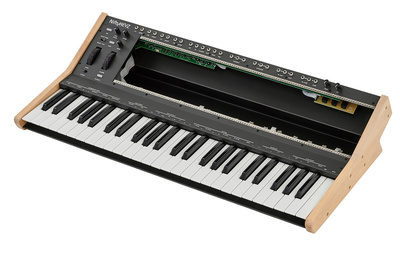
More information about NiftyKEYZ
Videos
You are currently viewing a placeholder content from YouTube. To access the actual content, click the button below. Please note that doing so will share data with third-party providers.
You are currently viewing a placeholder content from YouTube. To access the actual content, click the button below. Please note that doing so will share data with third-party providers.
* This post contains affiliate links and/or widgets. When you buy a product via our affiliate partner, we receive a small commission that helps support what we do. Don’t worry, you pay the same price. Thanks for your support!
 5,0 / 5,0 |
5,0 / 5,0 | 